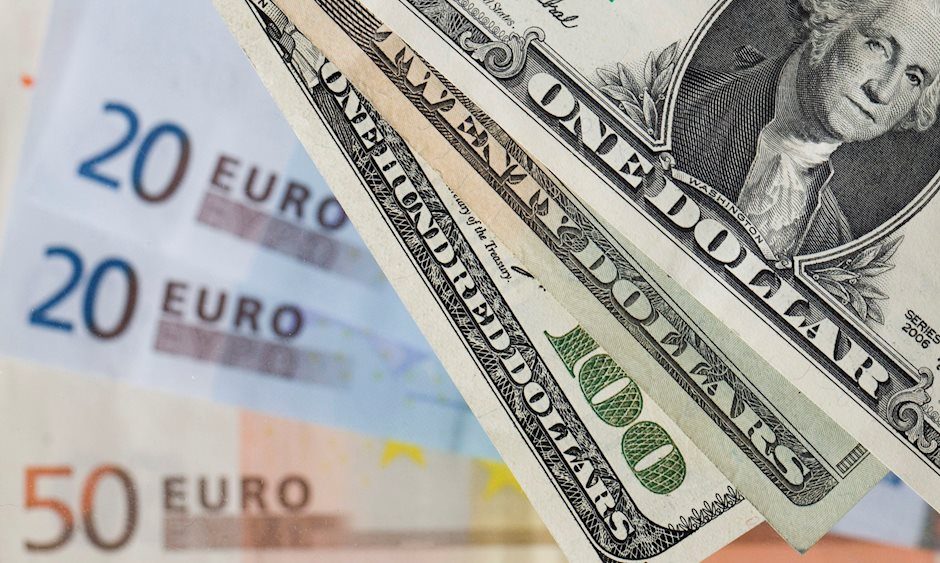EUR/USD Forecast: Euro needs to clear 1.0750 to extend rebound
- Euro trades above 1.0700 in the European session on Monday.
- 1.0750 aligns as next important resistance for the pair.
- German inflation data will be watched closely by market participants.

EUR/USD gained traction to start the week and stabilized in positive territory above 1.0700. The pair could face stiff resistance at 1.0750. Inflation data from Germany will be scrutinized by investors later in the day.
After closing in negative territory on Friday, EUR/USD started to edge higher on Monday, supported by the broad-based selling pressure surrounding the US Dollar (USD). Japan's suspected intervention in the foreign exchange market after USD/JPY reached a new multi-decade high above 160.00 seems to be the primary reason behind the renewed USD weakness. At the time of press, the USD Index, which tracks the USD's performance against a basket of six major currencies, was down 0.4% on the day at 105.33.
In the second half of the day, Germany's Destatis will release preliminary Consumer Price Index (CPI) data for April. Markets expect the CPI to rise 0.6% on a monthly basis. The Harmonized Index of Consumer Prices (HICP), the European Central Bank's (ECB) preferred gauge of inflation, is expected to rise 2.3% on a yearly basis to match March's increase.
Although markets are fairly certain that the ECB will lower key rates by 25 bps in June, a strong inflation reading from Germany could cloud the rate outlook and provide a boost to the Euro. ECB policymaker Pierre Wunsch said on Monday that a second reduction in key rates in July would lead to repricing that might go too far.
EUR/USD Technical Analysis
The Fibonacci 38.2% retracement of the latest downtrend aligns as key resistance at 1.0750. In case EUR/USD rises above that level and starts using it as support, it could target 1.0780 (200-period Simple Moving Average) and 1.0800 (psychological level) next.
On the downside, first support is located at 1.0700 (Fibonacci 23.6% retracement) before 1.0650 (static level) and 1.0600 (end-point of the downtrend).
Euro FAQs
The Euro is the currency for the 20 European Union countries that belong to the Eurozone. It is the second most heavily traded currency in the world behind the US Dollar. In 2022, it accounted for 31% of all foreign exchange transactions, with an average daily turnover of over $2.2 trillion a day. EUR/USD is the most heavily traded currency pair in the world, accounting for an estimated 30% off all transactions, followed by EUR/JPY (4%), EUR/GBP (3%) and EUR/AUD (2%).
The European Central Bank (ECB) in Frankfurt, Germany, is the reserve bank for the Eurozone. The ECB sets interest rates and manages monetary policy. The ECB’s primary mandate is to maintain price stability, which means either controlling inflation or stimulating growth. Its primary tool is the raising or lowering of interest rates. Relatively high interest rates – or the expectation of higher rates – will usually benefit the Euro and vice versa. The ECB Governing Council makes monetary policy decisions at meetings held eight times a year. Decisions are made by heads of the Eurozone national banks and six permanent members, including the President of the ECB, Christine Lagarde.
Eurozone inflation data, measured by the Harmonized Index of Consumer Prices (HICP), is an important econometric for the Euro. If inflation rises more than expected, especially if above the ECB’s 2% target, it obliges the ECB to raise interest rates to bring it back under control. Relatively high interest rates compared to its counterparts will usually benefit the Euro, as it makes the region more attractive as a place for global investors to park their money.
Data releases gauge the health of the economy and can impact on the Euro. Indicators such as GDP, Manufacturing and Services PMIs, employment, and consumer sentiment surveys can all influence the direction of the single currency. A strong economy is good for the Euro. Not only does it attract more foreign investment but it may encourage the ECB to put up interest rates, which will directly strengthen the Euro. Otherwise, if economic data is weak, the Euro is likely to fall. Economic data for the four largest economies in the euro area (Germany, France, Italy and Spain) are especially significant, as they account for 75% of the Eurozone’s economy.
Another significant data release for the Euro is the Trade Balance. This indicator measures the difference between what a country earns from its exports and what it spends on imports over a given period. If a country produces highly sought after exports then its currency will gain in value purely from the extra demand created from foreign buyers seeking to purchase these goods. Therefore, a positive net Trade Balance strengthens a currency and vice versa for a negative balance.
Premium
You have reached your limit of 3 free articles for this month.
Start your subscription and get access to all our original articles.
Author

Eren Sengezer
FXStreet
As an economist at heart, Eren Sengezer specializes in the assessment of the short-term and long-term impacts of macroeconomic data, central bank policies and political developments on financial assets.


















